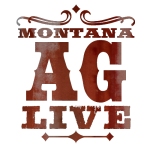Montana Ranching FAQ | Feeding Cows For Cold Weather
 What questions do you have about ranching in Montana? We’re teaming up with Montana PBS’ Ag Live program to bring you the answers. The Ag Live program from Montana PBS teams up with experts from Montana State University Extension to discuss everything from pesticide use and agricultural techniques involved in ranching and the cattle business. We ask that you submit questions to [email protected]. These questions will be answered by PBS and MSU Extension, then published in our monthly Digital Newsletter.
What questions do you have about ranching in Montana? We’re teaming up with Montana PBS’ Ag Live program to bring you the answers. The Ag Live program from Montana PBS teams up with experts from Montana State University Extension to discuss everything from pesticide use and agricultural techniques involved in ranching and the cattle business. We ask that you submit questions to [email protected]. These questions will be answered by PBS and MSU Extension, then published in our monthly Digital Newsletter.
Q: During the recent cold spell, my cows were eating me out of house and home! Is there a rule of thumb about how much extra feed cows should get during cold weather?
A: The range of temperatures where cattle (or other mammals) don’t have to expend any energy to maintain body temperature is called the thermoneutral zone. When it gets warmer than the upper critical temperature, cattle have to use energy to cool down. When it gets colder than the lower critical temperature, cattle have to use energy to warm up. You might be wondering, “what is the lower critical temperature?” Like any good animal science question, the answer is, “it depends!” In this case, it depends on hair coat and weather conditions (see table).
Estimated lower critical temperatures for beef cattle. From Beef Production and Management Decisions (Field, 2007)
| Coat Description | Critical Temperature |
| Summer coat or wet | 59° F |
| Fall coat | 45° F |
| Winter coat | 32° F |
| Heavy winter coat | 18° F |
With a summer hair coat, or a wet (to the skin) hair coat at any temperature, the lower critical temperature is quite warm at 59° F. On the other hand, the lower critical temperature for a cow with a heavy winter coat is 18° F. When a cow is experiencing cold stress, the major effect on nutrient requirements is an increased need for energy, which generally indicates the total amount of feed needs to be increased. A simple rule of thumb (more detailed information is available) is to increase the amount of feed 1% for every degree of coldness below the appropriate lower critical temperature.
For example, let’s say you have a 1200-pound cow with a winter hair coat. It’s currently 20° F with a 15 mph wind and you normally feed 24 pounds of hay per day. The effective temperature with the windchill is 6° F, and the appropriate lower critical temperature is 32° F. Subtracting 6 from 32 yields 26, so the amount of hay needs to be increased by 26%. This would be just over 6 pounds of additional hay for a total of about 30 pounds.


